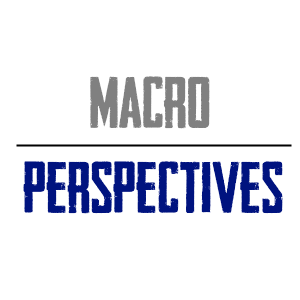A Federal Reserve rate hike is very likely to occur before the end of the year or in Q1. But many are still unclear about how the Federal Reserve will raise rates. After all, we’re in a new monetary environment in the post-crisis period thanks to the size of the Fed’s balance sheet. I’ll try to touch briefly on this to clarify some concerns.
In the pre-crisis period the Fed set a target rate for the overnight interest rate and altered the quantity of reserves in the banking system. Banks are required to hold some reserves and this allowed the Fed to act as a sort of monopolist in the overnight market. Increasing or decreasing the quantity of reserves allowed the Fed to set a target price and influence it by altering supply. More reserves would put downward pressure on rates, for instance. This is a rather crude explanation, but it’s close enough.
In the post-crisis period the Fed operates in a whole new paradigm. Because Quantitative Easing has expanded the Fed’s balance sheet there is no scarcity issue in the overnight market for reserves. This has put tremendous pressure on overnight interest rates, but the Fed was given Congressional authority to pay interest on excess reserves which allows the Fed to set a floor on the overnight rate. Banks wouldn’t lend at a rate lower than what they can earn on reserves so this allows the Fed to achieve its target rate without having to change the quantity of reserves.¹
There’s a problem with this framework, however. The Fed market is comprised of some entities that the Fed does not have authority to pay interest to. Because of this the Fed has been forced to expand its list of potential counterparties so it can implement a reverse repo facility that will operate similarly to paying interest on excess reserves to primary dealers. Since the Fed doesn’t have authority to pay interest to some entities in the overnight market it has experienced trouble with its target rate whereby downward pressure on rates is still exacerbated by these other firms. This repo facility will allow the Fed to “clean up” this excess price discrepancy and better target an overnight rate.
When the Fed finally decides to raise rates we’ll likely see the Fed continue to set a target range for rates. That is, the Fed will likely move its target from 0-0.25% to 0.25%-0.5%. After all, there will be some price discrepancy in the range due to the aforementioned inefficiencies in the price targeting mechanism. Importantly, the Fed will announce a change in the “Fed Funds Target Rate”, but what it will really be changing is the Interest on Excess Reserves as well as the Reverse Repo Facility. The changes in these rates will help set a target rate for reserves via arbitrage by essentially eliminating the desire to lend at a rate lower than what the Fed is willing to pay.
This has been a big concern over the years as the size of the Fed’s balance sheet has often been cited as inflationary, asset price destabilizing or an impediment to raising interest rates. As you can see from this basic primer, these concerns are largely unwarranted as the Fed has the proper tools to administer an increase in interest rates.
¹ – NY Fed FAQ – Why is the Fed Paying IOER?
² – Expanded Federal Reserve Counterparties
Mr. Roche is the Founder and Chief Investment Officer of Discipline Funds.Discipline Funds is a low fee financial advisory firm with a focus on helping people be more disciplined with their finances.
He is also the author of Pragmatic Capitalism: What Every Investor Needs to Understand About Money and Finance, Understanding the Modern Monetary System and Understanding Modern Portfolio Construction.

